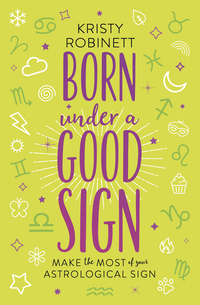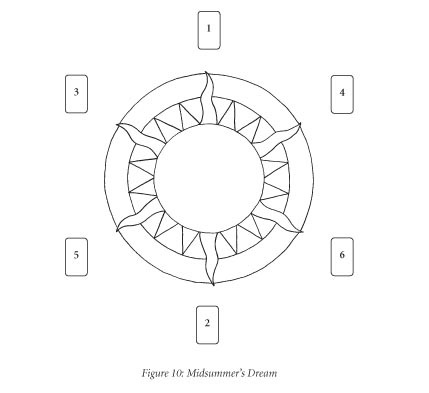Llewellyn Publications's Blog, page 26
December 18, 2019
Using Tarot to Accomplish Goals
Denise Hesselroth

Intentional Tarot is a remarkable book that begins where a reading usually ends. A reading usually describes what happened, what is happening, and what is likely to happen, all very useful information. However, most of us don’t believe that we live in a predetermined universe. Most of us believe that we the will and ability to shape our own future. This book teaches us how to use our cards to do just that. Here’s a look into Hesselroth’s wisdom:
In a traditional tarot reading the Querent wants to learnsomething of benefit to their question at hand. In Intentional Tarot we want to dosomething of benefit to someone or some situation. Instead of beginning with a question we begin with a solution. We envision exactly what we want to manifest, to alter, or to protect. Cards are selected face up with clear intentions. Our focus, as we look at and contemplate the cards, is not to interpret their meaning but to project our understanding of their meaning outward, with intention, to the Universe or whatever Deity you may relate to.
We practice Intentional Tarot in the belief that we are actually nudging the course of the Universe. We are tangible bits of the Universe. Our actions arethe Universe acting. Our actions may be just a pebble in the stream, or a butterfly’s wings in the breeze, yet when you use Intentional Tarot you are being an active force that is influencing the course of the Universe’s unfolding. While the Querent gets a response in the time it takes to lay down the cards and listen to the reading, with Intentional Tarot we act without expecting an immediate return. We are casting a pebble into a stream, which might possibly change the course of a river. Yet it is an action with a goal.
Where is the Universe?
I use the phrase “sending energy out to the Universe” often in this book. These words shouldn’t give the impression that the energies are going out far away among the stars. Perhaps there is a similar misconception if someone pictures Heaven as being far away up in the sky and beyond the clouds. In this section I want to briefly describe a quick mental exercise that I hope illustrates the concept of the word “Universe” as it is used in this book.
First, we might picture the Universe as all the stars in the night sky. However, this image is too cold and distant to represent the intimate energies we feel when we work with the tarot. Gradually we bring the sense of “Universe” closer. Picture a Universal boundary floating above the Earth’s atmosphere, then picture a “layer of Universe” settling down right at the cloud level. Next, the edge of the Universe extends to the roof of your house or apartment. Then imagine it as suspended just below the ceiling of whatever room you might be in. Look up! The Universe hovers there, only a few feet away. Then imagine the edge of the Universe suddenly flowing over you and reaching down to the center of the earth. The Universe is all around us and within us. It grounds us and makes us all a part of one unified field of energy.
When I activate the tarot and send energies “out,” I sometimes picture them as glowing all around me, extending from my heart directly and physically to both the object of my current goal and to the people or things that can influence the outcome I’m seeking. The Universe connects all of us into one thing.
The same is true for the energies that come to us from the Universe in a traditional tarot reading. We are receiving energy and information related to our questions, but the source is all around us and within us, not even inches away. As they say in the movies, “The call is coming from inside the house.”
Vocabulary
As with any new concept or procedure, we need new words and phrases to use when we talk about it.
Precant: I use this word to refer to the person selecting cards and sending intentions out to the Universe. I selected this word because it ends in -nt like Querent and has a similar-if-opposite meaning to that word. Querent means “one who seeks” and Precant is an old, rarely used word that technically means “one who prays.” While not everyone would consider sending out energies to the Universe as a prayer, in many ways it could be seen as such, and so I thought the word could be appropriated for this purpose in an Intentional Tarot context.
Spread: Obviously, this is not a new word to the tarot community. However, I’m adding slightly to its meaning for the sake of communicating about Intentional Tarot. In this chapter I’m using spreadin places where I might use readingwhen talking about traditional tarot concepts. In traditional tarot, the event that involves laying out cards and drawing an interpretation from them is called a reading. In Intentional Tarot, the event that involves laying out the cards and sending out intentions to the Universe is called a spread. The word is used here with two meanings at the same time. The first is in the way that tarot folk use spreadto mean laying out the cards. The second is in its normal verb form meaning “to open out something” as in “spread the news,” or “spread your arms,” or “spread the peanut butter.” We are spreading or extending our intentions out to the Universe.
To summarize:
In traditional tarot we have a Reader and a Querent (which could be the same person) receiving energies from the Universe. They “do a reading” with randomly selected cards and interpret the meanings found in them.
In Intentional Tarot we have a Precant (sometimes more than one) who is sending out their energy to the Universe. They “do a spread” with deliberately selected cards and their intention is to influence how the Universe unfolds.
December 16, 2019
Apricot Eggnog to Honor Jupiter, Lord of Thursday
Readers, please enjoy this guest blog post by Caroline Dow, author of Sanctuary of Your Own.
In Sanctuary of Your Own, my book on how to create a personal haven for meditation, relaxation, and renewal, I recommend incorporating elements of the five senses to kindle revitalization. Most of us probably can easily choose something to stimulate sight, sound, touch, and smell, but sometimes we neglect the sense of taste. While it’s simple to place an apple on your altar to represent wisdom or even a chocolate treat to help you relax, it can be fun to sometimes vary the theme and prepare a smoothie that carries a symbolic meaning. So in this blog post, I’m offering a recipe for an apricot eggnog potion.
During my meditations, I often take time to honor the reigning divinity of one of the days of the week by preparing a drink associated with the particular deity of the day and imbibing it in my haven. I call such a liquid refreshment a potion because I’m consuming it with a purpose in mind. After preparing the recipe and taking the potion to my refuge, I sip my drink and meditate on the symbolism associated with the goddess or god of the day.
Apricots are a fruit of Jupiter, whose day is Thursday. This deity represents expansiveness, benevolence, idealism, sociability (making friends), good fortune, and the religious life. As you drink your smoothie potion, you can meditate on any of these themes. All the ingredients in this potion are symbolic of love, so you can add this theme to your contemplations. In parentheses I offer an alternative key word for each ingredient that can also suffice as themes for your Thursday meditation.
Ingredients:
2 eggs (fertility)
2 tablespoons honey (harmony)
1 cup apricot nectar (friendship). Cans of nectar are available at the grocery.
¾ cup orange juice (long life)
½ cup nonfat dry milk powder (nurturing)
2 tablespoons protein powder (Added just because it’s good for you!)
1 tablespoons lemon juice (joy)
1 cup frozen strawberries, partially thawed (Besides perking up the blend, strawberries stand for foresight.)
Makes 2 servings.
In a small mixer, beat the eggs until thick and lemon-colored. Gradually add the honey, beating constantly. Set aside. In a blender, combine the apricot nectar, orange juice, milk powder, protein powder, and lemon juice; cover and blend until well mixed. Add the strawberries; blend again until smooth. With the blender running, add the egg mixture. Blend until smooth. Transfer to a storage container, cover, and chill. Stir well before serving. Garnish with a fresh mint leaf (for prosperity), strawberry slice, or lemon peel curl. Relax, contemplate, and enjoy!
P.S. Other botanicals associated with Jupiter include myrrh, carnation, clove, oakmoss, clover, nutmeg, jasmine, sugar, and amber.
Our thanks to Caroline for her guest post! For more from Caroline Dow, read her article “Create Your Own Personal Haven—Anywhere.”
December 11, 2019
Happy Midsummer to Our Southern Hemisphere Friends!
Here in the northern hemisphere, Yule is almost upon us, but for our southern hemisphere friends, it is time for Midsummer. To help you celebrate, we’ve rounded up our best rituals, spells, books, and more!
Midsummer: Ritual and Lore Use this ritual from Scott Cunningham to brighten your Midsummer festivities.
Midsummer’s Dream Tarot Spread: Celebrate the freedom and liberation of summer. Because energy is so potent during Midsummer, it is a wonderful time for protection, developing psychic ability, and divination. Use the Midsummer’s Dream layout when you want to visualize your heart’s desire. Catch a glimpse of the future in the fall beauty of the sun’s golden rays.
A Simple Summer Solstice Ritual: At this time, when the earth’s gifts are so openly displayed, take the opportunity to give back a little. Instead of a complicated ritual, why not plant a tree for your Mother? Use this simple Summer Solstice ritual from author Deborah Blake.
Midsummer Garden Party: Midsummer, or the summer solstice, is the longest day of the year and the shortest night. Use these ideas from author Ellen Dugan for celebration.
Midsummer Spells: Browse our spells to find your perfect Midsummer ritual or incantation.
Books:
Midsummer
Llewellyn’s 2020 Sabbats Almanac
Rituals of Celebration
Supermarket Sabbats
Sabbats
The Witch’s Wheel of the Year
December 9, 2019
Winter Is for Resting
Readers, please enjoy this guest blog post by Raechel Henderson, author of Sew Witchy.
 I will admit it: winter is not my favorite season. Give me the sprouting new life of spring, or the bounty of autumn. Even the energy of Summer, with its heat and mosquitoes, is more welcome than the cold and snow and ice of winter. More than anything, though, I think my issue with winter is that it is a time for rest. It is a time for reflecting on what the year brought, and mulling over what lessons one learned. It is a slow season. And, as someone who is constantly working, constantly on the go, I find it hard to stop and just be.
I will admit it: winter is not my favorite season. Give me the sprouting new life of spring, or the bounty of autumn. Even the energy of Summer, with its heat and mosquitoes, is more welcome than the cold and snow and ice of winter. More than anything, though, I think my issue with winter is that it is a time for rest. It is a time for reflecting on what the year brought, and mulling over what lessons one learned. It is a slow season. And, as someone who is constantly working, constantly on the go, I find it hard to stop and just be.
And so, I cheat. I throw myself into the tasks of the season. I decorate the house with paper snowflakes and garlands made of dried cranberries and orange slices. I keep the kitchen oven busy with cookies and soups. There’s a small crock pot simmering all day long with cinnamon sticks, cloves, and rosemary to help keep the space cleansed, since the window will stay shut against the cold.
The long, cold stretch is interrupted by our winter solstice celebrations, which gives me an excuse to leave the comfort of blankets and hot chocolate. Every year we build a book tree using nearly all the books in our home. At the base we pile presents for the kids, at the top sit Santa Hulk and his elf helper Iron Man. It is silly, but we’ve been doing it for so long it has become tradition.
That shortest day ends with a bonfire, where we burn a log my partner has specially prepared, carved with runes to bring blessings and protection on our household. We pour out libations to our patron deities, write out our wishes for the coming year, and scry the coals looking for portents. It’s the most activity we’ll engage in over the winter months. Then, it’s back to Harry Potter marathons and cuddling with the kids whenever we’re not at work or school.
I will tackle sewing chores that I’ve let sit all year: making fabric twine while watching television or mending clothes while listening to podcasts. My hands are kept busy so my mind can relax. When the knees in the last pair of pants have been patched, I can turn to planning for the coming year.
This isn’t the kind of planning where I write out lists and charts and budgets. It is more of a dreaming, visualizing what the future will be as I flip through seed catalogs. And when I start to get too antsy, going over all the things I need to do, I remind myself that those are worries for when the wheel approaches spring. There are seeds that need a period of cold before they can germinate, I tell myself. “Be that seed. The change of seasons will tell you when it is time to awaken.”
It is a lesson I still struggle to learn. Fortunately, winter will always come back around to remind me.
Our thanks to Raechel for her guest post! For more from Raechel Henders, read her article, “By Glove and Cowl: Using Sewing Magick to Boost Our Words” and create the gloves and cowl to keep you not only warm but shielded and empowered this winter season.
December 4, 2019
A Spread for Inspiration and Creativity
Jaymi Elford

Sometimes living an inspired life means having tools to deal with times where inspiration or creativity feel blocked or lacking. Luckily, Elford gives us a spread to help with those times.

December 2, 2019
Yule: My Favorite Holiday
Readers, please enjoy this guest blog post by Jason Mankey, author of The Witch’s Book of Shadows, The Witch’s Athame, Transformative Witchcraft, and the new Witch’s Wheel of the Year.
 Ask most Witches what their favorite Sabbat is and the most common answer is nearly always, “Samhain.” I love Samhain, too, but my favorite Sabbat is actually Yule, and for a variety of reasons. While Samhain tends to focus most exclusively on the harvest and the dead, there are all sorts of different ways to celebrate Yule. It might actually be our most diverse Sabbat, and its roots are genuinely ancient.
Ask most Witches what their favorite Sabbat is and the most common answer is nearly always, “Samhain.” I love Samhain, too, but my favorite Sabbat is actually Yule, and for a variety of reasons. While Samhain tends to focus most exclusively on the harvest and the dead, there are all sorts of different ways to celebrate Yule. It might actually be our most diverse Sabbat, and its roots are genuinely ancient.
Our culture generally thinks of Samhain as the most “Pagan” of the Sabbats, but the truth is, we don’t know very much about how Samhain was celebrated by the ancient Irish-Celts. Its focus might not have even been on the dead, a fact that surprises a lot of people. Yule and related Midwinter celebrations, on the other hand, are reasonably well-documented, and they were celebrated in a lot of different places.
The Romans decorated with mistletoe, ivy, and evergreen branches while they celebrated Saturnalia; they also exchanged presents and drank heavily. If this sounds a lot like Christmas, that’s not an accident; all sorts of traditions associated with Saturnalia and the Roman Kalends (the celebration marking the start of January) were absorbed into Christmas and the celebrations around it. The Norse celebrated their Yule with presents and heavy drinking, too, and burned Yule logs and decorated with evergreen branches.
Yule is also home to all sorts of magickal beings whose origins might go back to ancient Paganisms. The fearsome Krampus might be some sort of ancient horned god. The Yule Goat of Finland is most likely linked to the goats that pulled Thor’s chariot, and the Swedish tomte are classic nature spirits or fairy folk.
In addition to its ancient roots, what I love most about Yule is that there are many ways to celebrate it. Most often my own Yule rituals are celebratory, with toasts to the good health of my coven mates. In many parts of the world, Yule has long been a joyous celebration, and not just because of the presents. Traditionally it was a time for subverting the social order, cross-dressing, and for putting power in the hands of the young and the less fortunate (at least for a day or two).
Yule can also be a somber sabbat, and traditionally was a time for ghost stories. (The most well-known Christmas story of all time, Charles Dickens’ A Christmas Carol, is essentially a ghost story.) The colder weather and long nights create the perfect environment for tales of hauntings and the unexplained. The boundary between the living and the dead may not be as permeable at Yule as it is at Samhain, but strange and magickal things have a long history of showing up during the Winter Solstice.
For many of us, Yuletide is a celebration of the sun’s rebirth. Many Witches stay up all night on the Winter Solstice to welcome in the first rays of the reborn sun. Yule is a promise that even in the darkness of Winter there are sunnier and warmer days ahead, even if it might be several months before they show up.
One of the things I love most about Yule is that it’s one of the many holidays that gather under the banner of “Happy Holidays.” The similarities between Christmas, Yule, Hanukkah, Kwanza, and New Year’s Celebrations are strong enough that it feels like everyone around us is celebrating. As divided as our society tends to be these days, there’s something truly wonderful about most folks sharing a bit of Holiday Cheer every December.
Our thanks to Jason for his guest post! For more from Jason Mankey, read his articles and browse his books here.”
November 25, 2019
Got Elves?
Readers, please enjoy this guest blog post by Linda Raedisch, author of Night of the Witches, Old Magic of Christmas, and the new Lore of Old Elfland.

The Rumpelwichtelbaum at the Viking Museum in Haithabu, Germany.
When my editor asked me if I had any special wishes for the cover of Lore of Old Elfland, I told her what I didn’t want: elves. If there absolutely had to be elves on the cover, I said, they should be well camouflaged, covered in lichen, tucked away among the roots of trees. Then I thought of what I did want: a tree, and not just any tree, but one particular European beech now known in our family lingo as the Rumpelwichtelbaum. The Rumpelwichteln are the peevish subterranean wights in the German translation of Astrid Lindgren’s Ronja, the Robber’s Daughter. In English, they’re “rumphobs.” You could call them elves. Because we all love this story, it’s become our tradition to photograph the youngest children of our extended family hiding among the roots of this tree.
In my book, I talk about my family’s long-standing relationship with The Hobbit (published, coincidentally, the year my mother was born), but our dealings with the elves extend beyond that. I’ve given away most of the books I owned as a child, but I’ve held on to all the ones with elves in them. As a child, I couldn’t read Die Heinzelmännchen von Köln, but I loved the pictures of the industrious little Heinzelmännchen doing all the housework while the people of Cologne slept. Even closer to my heart were the Mainzelmännchen, cartoon dwarves who preceded the commercials on the Mainz television station, ZDF. Every time we went to stay with my grandmother in Germany, my sister and I got to pick out one new rubber Mainzelmännchen doll each. (The resulting tribe of eight now resides with me.) Each time my slightly younger native cousins came to visit our grandmother, they made a beeline for her bottom kitchen cupboard where the Mainzelmännchen hid treats for them. At six, I didn’t believe the Mainzelmännchen were real, but I was still miffed that they never left any treats for me.
When I insisted that any elves on my book cover had to be camouflaged, I was picturing the ones in my falling-apart, 1967 edition of Little Red Riding Hood, illustrated by Jean Winslow. I don’t know if my sister and I ever actually read the story; we just pored over the pictures, hunting for the sometimes cute but more often sinister faces of the elves peeking out from behind the tree trunks and rocks. I got my wish: there aren’t any elves on the cover of The Lore of Old Elfland, at least not that I’ve been able to spot, and the tree framing the title looks very much like the one in the photo I sent my editor of that European beech surrounded by my own and my cousin’s children. I don’t know what elves their children’s children will revere—or fear—but I hope they’ll still assemble at the sacred Rumpelwichtelbaum.
Our thanks to Linda for her guest post! For more from Linda Raedisch, read her article “A Culture of One: Creating Your Own Elfland.”
November 20, 2019
A Few Tarot Mysteries Revealed
T. Susan Chang

Lots of people want intermediate level tarot material. If that’s you, or if you are beginner who is in love with tarot correspondences, then this book is for you. Most people are familiar with the Golden Dawn astrological associations. But there are more and older versions of astrological correspondences. You can learn about them in the pages of this handy and useful reference.
Have you wondered about the Justice/Strength numbering switcharoo? Or swapping the Emperor/Star Hebrew letters? You can learn about that in this book as well. Just take a peek:



November 18, 2019
Our Personal “Ironing Boards:” Identifying Those Things for Which We Should Be Grateful
Readers, please enjoy this guest blog post by A. Paul Miller, author of The Mindful of Calm.
 As we lead up to the holidays and start to think about our Christmas lists and what we want to put on them, it is a good time to reflect on what we already have and for what we should be grateful already having. Let me share an experience with you that I always remember when I get the urge to want more.
As we lead up to the holidays and start to think about our Christmas lists and what we want to put on them, it is a good time to reflect on what we already have and for what we should be grateful already having. Let me share an experience with you that I always remember when I get the urge to want more.
Several years ago, while visiting a friend in the hospital who was recovering from a stroke, he mentioned how much we can take our health for granted. I suddenly found myself telling him about this experience I had previously had.
An evening spent ironing: yay!! The wardrobe was empty, and I had run out of clothes; they had all been worn and washed over the last few weeks, and the very large pile of ironing was now a serious obstacle to finding somewhere to sit on my three-person couch. Since this was a job that I was going to “enjoy immensely,” it required a DVD and several beers to drink while executing the process to help alleviate the boredom. With a DVD selected and some beers lined up, all I needed was the iron and ironing board.
So, into the small kitchen I went looking for the ironing board. Nothing there.
Well, maybe it’s in the pantry. No, nothing there.
Well, it’s not in the sitting room, as I would never leave it out for visitors to see.
What about the downstairs cloakroom? No, not there.
I would never have put it in the garage, but I had better check just in case. Nope, not there.
Oh, for goodness sake, I thought to myself. I live in a small, 1300-square foot townhome; how difficult can it be to hide an ironing board from yourself?!
Pause and breathe, Paul. Okay, Paul. Slow down. Start at the beginning and go through the whole house again, slowly.
So, back into the living room I went. I glanced at my watch; it had been twenty minutes since I first started my search. I was starting to get very frustrated.
Open a beer and pause a moment, I thought.
As I went back into the kitchen to get the beer, there was the board, leaning against the kitchen wall! I had put it there many many weeks earlier and had walked passed it so many times that it had ceased to be separate from the wall. For all intents and purposes, it had become a part of the wall. In that moment of realizing why I had not seen it, I suddenly had a intuitive leap relating to gratitude. I wondered how many things I have in my life, that are always in front of me, for which I should be grateful, but never see any more.
I wondered: just how many “ironing boards” did I have in my life? How many things do we all have in our lives, like friends, family, health, and shelter, that we take for granted and never appreciate that they are there?
Right now, stop and think for a moment, and name a couple of the “ironing boards” in your life.
Our thanks to Paul for his guest post! For more from A. Paul Miller, PhD, read his article “Applied Meditation: Make Changes in Your Everyday Life with Meditation.”
November 11, 2019
Demystifying the Zodiac
Readers, please enjoy this guest blog post by Kristy Robinett, author of several books, including It’s a Wonderful Afterlife, Tails from the Afterlife, and the new Born Under a Good Sign.
My interest in the zodiac began in my early years when my eyes wandered away from the comic section of the newspaper to the horoscopes. It continued into college when I did a paper in my psychology class on the differing personality types according to the astrological signs. One day after class my psychology professor handed me a flyer.
“I thought you might be interested in this class,” she said. “It’s not connected to school, but after reading your passion in the paper, I had to share.” 
The flyer read, “Everyday Astrology,” and the class was scheduled to begin the very next day. I wasn’t good at being spontaneous. I’m the type who needs to mentally prepare myself before I go anywhere. I will often still mentally sabotage it to find an excuse to not go, and then work myself up to go, and so the cycle continues, back and forth. It’s exhausting—and also very typical of a Scorpio, as I would discover when I decided to be uncharacteristically impulsive and go to the class.
The class was held in a nearby village on the outskirts of Detroit. It was a town that was lovingly eclectic, a bit hippie and bohemian. Spotting the address on the flyer, I was relieved that I was able to pull right into the parallel parking spot along the tree-lined street. I stood on the sidewalk for a moment and took in the energy of the location. It was a yellow bungalow with bright green shutters. A large sign that read OPEN lit up the window, but there was nothing notable as to what the business even was. I decided to accept the fluorescent invitation anyhow.
The white paint was chipping away on the walls of the narrow stairwell as I climbed the steps two at a time, following the arrows on a sign that said, “Follow the Energy.” It led me to a large and brightly lit classroom that smelled of patchouli incense. The room was painted in a beautiful sapphire color with white trim. There was no furniture, just pillows, blankets, and rugs on which to sit. I carefully watched fellow students pile in; a total of twelve of us sat in a circle. A woman walked by and dimmed the lights. Her long, silver hair was piled loosely and clipped on top of her head.
“Welcome,” she smiled. “My name is Marian.” Her voice was raspy, like a 1950s lounge singer. “I see you’ve found a seat. Look at the color pillow you chose, as even that isn’t random. It’s also not random that each one of you represents each of the signs of the zodiac, and some of you recently registered for the class. There are no coincidences.”
The class gasped in amazement.
Through the wisdom of my studies, I discovered that the people we embrace, the jobs we choose, and even the clothes we buy are all a part of who we are. We each have our own individual energy, much like a fingerprint, and nothing is random. Adding to that energy are influences, and then there’s the foundation of our astrological sign that creates yet another layer—kind of like the cherry on the top of the sundae. There may be twelve astrological signs, but within each sign are more and more doors to discover, the information multitudinous. Use the knowledge—don’t make the knowledge fit.
For years I used the astrological insight to help create successful practices in my human resource career, in a very mainstream way. In the middle of an economic downfall, when my astrological chart told me not to quit my day job, I bucked the system (and the horoscope advice) and quit my day job to open an office as a psychic medium, author, and inspirational speaker. My friend, an attorney by day and an astrologer by night, warned me that my planets, houses, moons, and transitions weren’t aligned for a positive outcome. To me, though, it felt right. Was it simple luck or trusting the energy and intuition that I landed on my two feet instead of smashing my face into the proverbial celestials?
Helping my clients to overcome their fears and obstacles in individual, group, and corporate settings has been a passion of mine, especially when it includes all that the zodiac teaches—especially the cherry on top.
Our intuition gauge never lies, but our assumptions fib something fierce. Just because you dated a terrible Leo doesn’t mean that all Leos are terrible. Just because your best friend is a fabulous Capricorn doesn’t mean that all Capricorns are fabulous. There’s so much more to mere astrology than what meets the eye. Just as reading the jacket of the book doesn’t give you its full content, neither do the stereotypes of the zodiac. Understanding the energy of each zodiac sign provides you with greater understanding, so that you’re able to facilitate a better future for yourself.
Our thanks to Kristy for her guest post! For more from Kristy Robinett, read her article “5 Ways Your Stuff Is Keeping You Stuck.”
You can also order her book, Born Under a Good Sign.

Llewellyn Publications's Blog
- Llewellyn Publications's profile
- 241 followers








